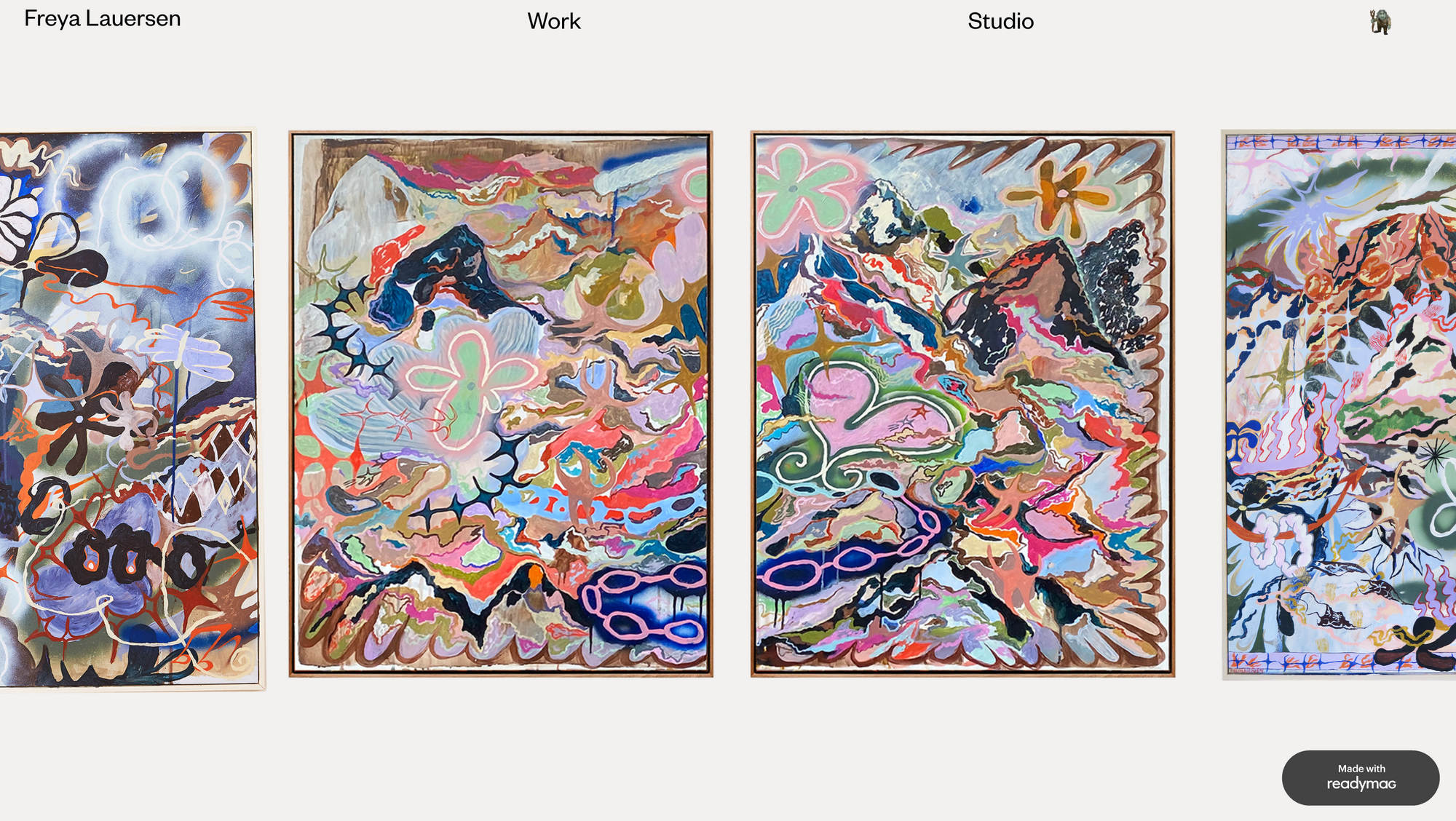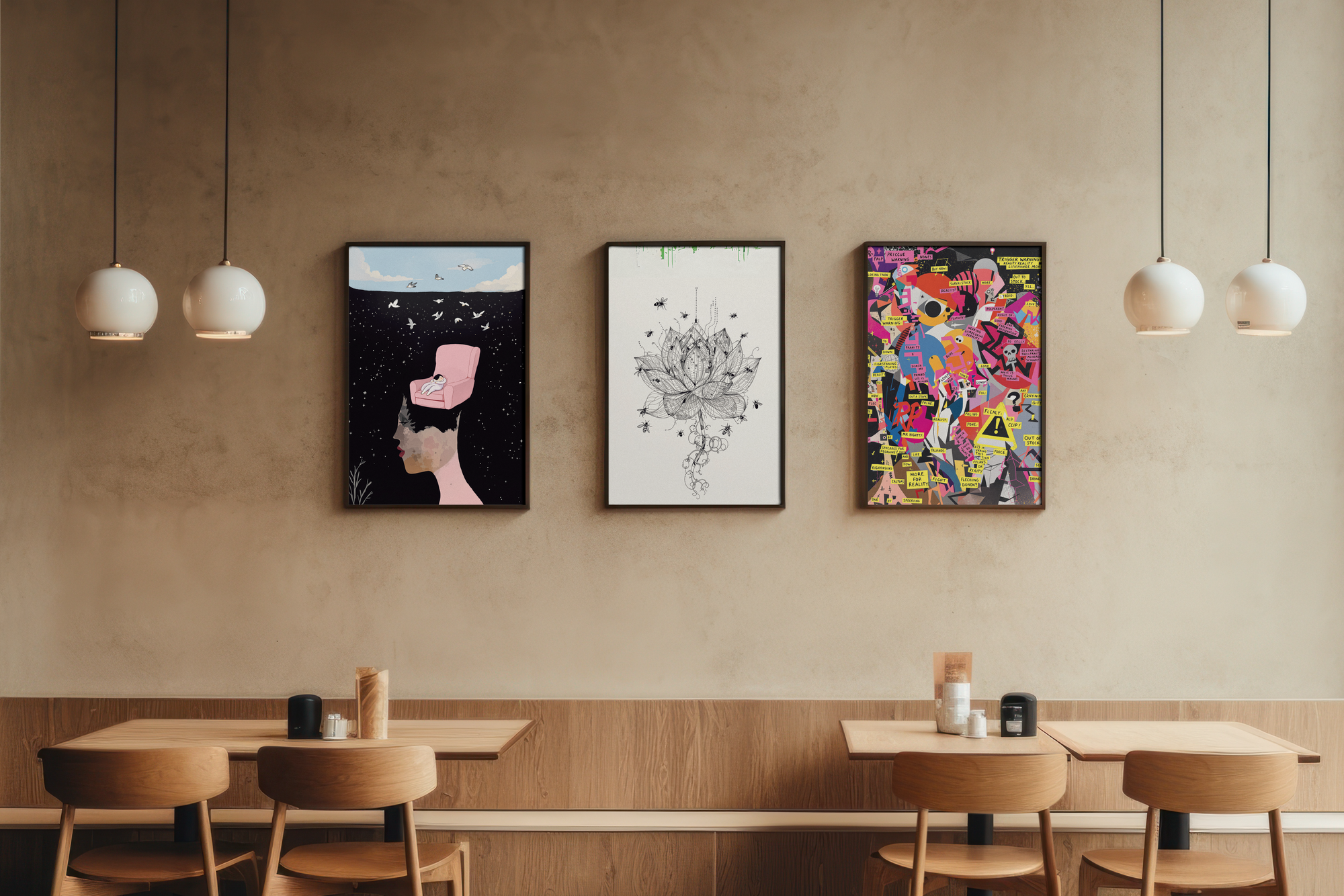In 2025, being an artist means more than just creating art; it means knowing how (and where) to share it. Whether you’re a painter, illustrator, photographer, or digital designer, there’s never been a better time to get your art out into the world.
But, with a deafening wave of noise on social media, and dozens of online platforms and marketplaces competing for your creative talent, where should you actually sell your art?
Here’s our no-fluff, indie-artist-first guide to selling your work in 2025, including platforms, pros, and the real talk on what each option is good for.
1. Your own website
Best for: Building your brand, long-term sales, direct customer relationships
Platform ideas: Shopify, Squarespace, Readymag
There’s no better investment than your own website, whether it's an online store or a simple portfolio page with a commissions contact email or form. Creating your own website gives you full control over branding, pricing, and how your work is presented. And as a bonus? You own the customer data, meaning you can build customer and client relationships that last a lifetime.
👉 Pro Tip: Use your site as your HQ, but still branch out with other platforms and representation, linking to other marketplaces and social platforms. Think of it like your digital studio/gallery hybrid like the example above made in Readymag.
2. Etsy
Best for: Artists selling prints, zines, crafts, and niche work
Audience: Handmade, vintage, and design-savvy shoppers
Love it or hate it, Etsy is still a go-to for artists. Its built-in audience means you’re searchable from day one. However, the platform is crowded and competitive. Make sure your listings are SEO-strong and your art hyper-specific. Finding your niche is key to Etsy success.
Pros:
✔ Ready-made audience
✔ Search visibility
✔ Easy shipping + listing
Cons:
✖ Fees and commissions add up
✖ Algorithm favors frequent sellers
✖ Less brand control

One of our Etsy favorites is Elly MacKay, a paper artist who has illustrated and published books, and sells photographic prints of her work to her audience via Etsy.
3. Social media (not a traditional store, but still key)
Best for: Building hype, connecting with fans, driving traffic to your shop
TikTok and Instagram weren't initially built as online stores, but they have changed the game as they've slowly transformed into key sales channels. It’s essential to build your presence on social media, and for artists, TikTok and Instagram make the most sense as they are visual-first. Stories, behind-the-scenes process videos, studio shots, and direct engagement all builds trust.
Set up Instagram Shopping if you sell through your own site, and keep the link in your bio updated with where people can buy. With TikTok, you can sell through their own platform, bypassing your own website. Whilst this may yield more sales, keep in mind the charges from TikTok and the fact they own customer data. In our humble opinion, we'd use TikTok to drive traffic to our own store rather than selling on the platform itself. You never know... one reel could change everything.
4. Curated print stores
Best for: No cost of marketing and production for the artist, a new income source.
With zero cost for the artist, this one is a no brainer. Provide artwork to curated art print stores to produce, market, and ship your artwork; you don't have to lift a finger.
We provide this service at Odd Wall, as do others like INPRNT (although other stores may have higher artist obligations, so always do your research).
At Odd Wall, you provide one or more high quality files of your artwork, giving us exclusive rights to that artwork only, and we'll handle the rest. Production, shipping, admin, customer support, and marketing is our job; creating great art and getting paid when it sells is yours. Check out how to sell your artwork online with Odd Wall.

5. IRL
Best for: artists new to selling their art
Think local fairs, weekend markets, even your local coffee shop. Despite the pressure to be online, selling IRL is still the best way to start. You get to meet people, hear feedback and witness reactions to your work. And, apart from paying for a stall (which is generally pretty reasonable), you keep the profits.

Image: Spitalfields Art Market in London, UK
So, where's best to sell my art?
Put simply, there’s no single right answer. The best channel or platform is the one that fits your art, your voice, and your goals. And the most powerful strategy? A combination of channels. Pick 2-3 places, and build from there.
You don’t need to be everywhere. You just need to show up where it counts.




